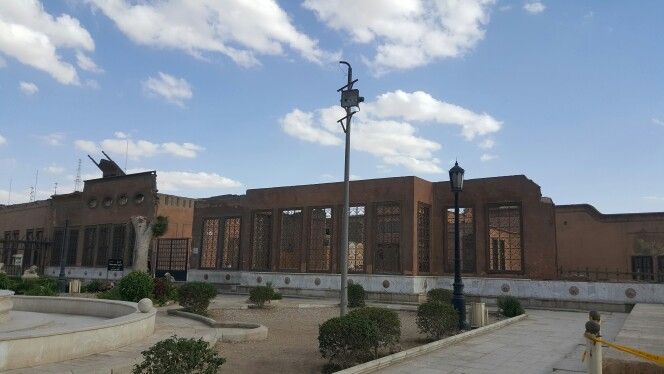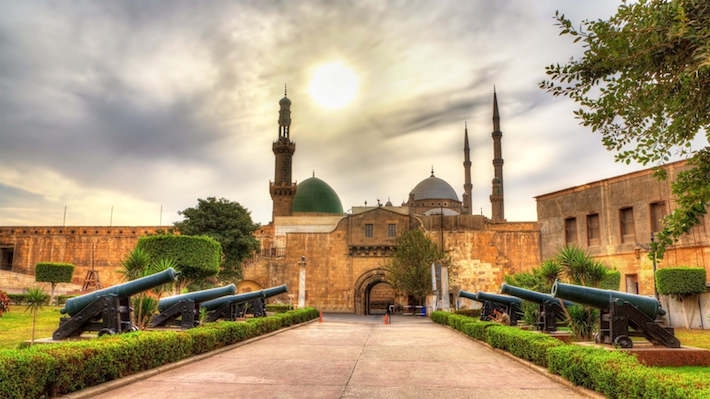Introduction: A Palace of Intrigue and Elegance
In the heart of the historic Citadel of Cairo, where centuries of power and politics once played out, stands a palace as exquisite as it is overlooked: Al Gawhara Palace Cairo. Known also as the Jewel Palace, this regal structure is a striking example of 19th-century Ottoman-inspired architecture blended with European opulence. If you're planning a visit to Cairo and want to dig deeper into Egypt’s royal legacy beyond pharaohs and pyramids, Al Gawhara Palace is your hidden gem waiting to be explored.
Unlike the ancient wonders of Egypt, this palace speaks to a more recent chapter—when rulers wore fezzes instead of crowns, and Cairo was dreaming of European sophistication while holding onto Islamic tradition. Built as a royal residence and reception hall, Al Gawhara still shimmers with tales of grandeur, politics, and a bit of scandal.

The Story Behind Al Gawhara Palace Cairo
Commissioned by Mohammed Ali Pasha, the founder of modern Egypt, Al Gawhara Palace was built in 1814 within the Citadel of Cairo, one of the most strategically significant locations in Egyptian history. The name "Gawhara" translates to "jewel," and the palace truly lived up to its name. It was intended to be the new seat of government and a statement of the ruler’s aspirations to elevate Egypt to match the imperial courts of Europe and the Ottoman Empire.
Mohammed Ali used the palace not only as his private residence but also as a grand reception hall to host important dignitaries, foreign envoys, and members of the royal family. Over the years, it witnessed royal ceremonies, secretive meetings, and episodes of betrayal—including the infamous massacre of Mamluk leaders in 1811, orchestrated by Mohammed Ali himself at the Citadel.
What Makes Al Gawhara Palace Unique?
While many palaces across Egypt showcase grandeur, few match the elegance and detailed artistry found in Al Gawhara. Its interiors are an enchanting blend of Ottoman, French, and Rococo styles—each corner dripping with chandeliers, gilded mirrors, and handcrafted woodwork.
✨ Highlights Inside the Palace:
-
The Throne Room: The centerpiece of the palace, this room is decorated with gold-trimmed walls and mirrored ceilings. The lavish throne used by Mohammed Ali is still on display, surrounded by velvet chairs and ornamental panels.
-
Chandeliers and Mirrors: A gift from Louis-Philippe of France, the chandeliers illuminate massive rooms that reflect in countless gilded mirrors lining the walls.
-
Hand-painted Ceilings: The ceilings are an artistic masterpiece—decorated with Islamic motifs, Ottoman floral patterns, and European frescos.
-
Private Apartments: These rooms give insight into royal domestic life—ornate yet intimate.
-
Royal Collections: Display cases showcase personal belongings, weaponry, gifts, clocks, and priceless antiques from around the world.
Despite suffering fire damage in the late 20th century, the palace has been lovingly restored, retaining its timeless elegance and historical significance.
The Architecture: A Fusion of Empires
Al Gawhara Palace stands out for its fusion of Islamic, Ottoman, and European architectural influences. The exterior is subtly Islamic in its symmetry and arches, while the interior embraces the flamboyance of the French Rococo and Baroque styles.
The builders employed both local Egyptian artisans and imported materials from Europe and the Ottoman Empire. Intricate stucco carvings, inlaid marble, and fine silk wall hangings were sourced with international flair. Walking through the palace feels like stepping through the crossroads of 19th-century empire building.
Why You Should Visit Al Gawhara Palace Cairo
While Cairo dazzles with pharaonic treasures and Islamic monuments, Al Gawhara Palace offers a lesser-known but equally enchanting experience. Here’s why you should make time for it:
-
A Glimpse into Egypt’s Modern Founding Father: Mohammed Ali Pasha was a pivotal figure in shaping modern Egypt, and this palace captures his ambition.
-
Jaw-dropping Interiors: From gold-leaf ceilings to handwoven carpets, the palace is an architectural marvel.
-
Serene Atmosphere: Compared to more tourist-heavy attractions, Al Gawhara offers peace and space for reflection.
-
Educational Experience: Ideal for travelers who want to understand the Ottoman influence in Egypt's 19th-century transition.
-
Perfect for Photography: The natural light bouncing off marble floors and crystal chandeliers creates unforgettable snapshots.
Tips for Visiting Al Gawhara Palace
-
Opening Hours: The Citadel (which includes the palace) is open daily from 9:00 AM to 5:00 PM.
-
Entry Fees: The general Citadel ticket includes access to Al Gawhara Palace.
-
Dress Code: Modest attire is recommended, especially if you plan to enter nearby mosques.
-
Guided Tours: Flying Carpet Tours offers expert-guided tours that bring the palace’s history vividly to life.
-
Photography: Photography is allowed but may be restricted in some areas—always check on arrival.
How to Get There
Al Gawhara Palace is located inside the Salah El Din Citadel, overlooking the city of Cairo.
You can reach it by:
-
Taxi or Uber: Just 20–30 minutes from downtown Cairo.
-
Private Tours: Most organized tours of Islamic Cairo include the Citadel.
-
Public Transport: Less convenient, but possible with a combination of metro and taxi.
Nearby Attractions You Can Combine With Your Visit
-
Mohammed Ali Mosque: Right next to the palace—don’t miss its massive domes and breathtaking views.
-
Military Museum: Learn more about Egypt’s military past.
-
Sultan Hassan Mosque: Just down the hill from the Citadel—one of Cairo’s grandest mosques.
-
Al Azhar Park: A short ride away, perfect for a sunset walk after your historical journey.
Suggested Itinerary for a Royal Day in Cairo
Morning
Start at the Citadel. Begin your visit with Al Gawhara Palace to take in its rich interiors while it's quiet.
Midday
Head to the Mohammed Ali Mosque, then take in the Military Museum or have lunch nearby.
Afternoon
Walk down to Sultan Hassan and Al-Rifa’i Mosques. Wrap up the day at Al Azhar Park.
Final Thoughts: A Hidden Royal Gem Awaits
Whether you’re fascinated by Egypt’s royal history, Ottoman architecture, or simply crave an off-the-beaten-path adventure in Cairo, Al Gawhara Palace is worth every step. This isn’t just a museum—it’s a vivid snapshot of Egypt at a turning point between the old world and modern nationhood.
From its mirrored throne room to its quiet courtyards, the palace speaks of grandeur, diplomacy, and Egypt’s unique place between East and West.
Dive into the elegance of Al Gawhara Palace Cairo—where history gleams in gold, and every room tells a story worth discovering.

